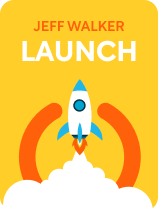

This article is an excerpt from the Shortform book guide to "Launch" by Jeff Walker. Shortform has the world's best summaries and analyses of books you should be reading.
Like this article? Sign up for a free trial here.
How do you get people to subscribe to your email list? Should you let feedback influence your product? How can you build anticipation around your product launch?
Entrepreneur and digital marketing expert Jeff Walker suggests you treat your product launch like a major event to stir up anticipation and build desire. He recommends you do three things before you open for sales: create an email list, gauge the interest of prospective customers, and build anticipation.
Keep reading to learn the ins and outs of Walker’s pre-launch marketing strategy.
Step 1: Create an Email List
Whether you’re starting with a vague business idea or a fully-developed product, Walker says that creating and growing an email list is the first step in your pre-launch marketing strategy. The Internet enables you to access a wider pool of potential customers, and encouraging people to subscribe to your content helps you stay connected and form lasting business relations.
Start Your List
Before you even mention your product, attract followers who are interested in receiving regular emails from you. To start building an email list, Walker suggests you:
1) Develop your promise. Figure out the core reason people should subscribe to your list. To do this, consider something free and valuable that you can offer through email.
2) Identify your target market. Walker suggests looking for a specific group of people whose needs or wants could be met by your product.
3) Create a “squeeze page”—a landing page on your website that gives visitors the choice to either subscribe to the email list or leave.
4) Encourage people to subscribe with an enticing offer. Give people an immediate incentive to sign up. This should be something free and specific.
Grow Your List
Walker suggests three methods of promoting traffic to your page.
1) Organic Traffic—Drive traffic to your page by getting your website to appear higher up in the search engine’s results. This increases the likelihood that people will come across your page.
2) Social Media—Use social media as a tool to draw attention and direct people to your email list. By social media, Walker’s referring to platforms that allow people to connect, follow, and share content like Facebook.
3) Paid Advertising—In digital marketing, this involves spending money to display your promotions on relevant platforms so that more people can discover your brand, such as Google Ads.
Step 2: Gauge Interest
Once you’ve accumulated an email list, start bringing your product to the attention of your email subscribers. In this step, gauge whether you’ve got a successful product worth launching by soliciting engagement from your followers. For instance, if you’re planning to sell a 30-day yoga challenge, it’s time to start alerting your list about it.
Send a simple email to your followers telling them about the product you’re planning to launch. Walker suggests directly asking for feedback and questions through a survey with questions like: “What is the biggest thing you want to get out of a yoga challenge?” Take note of their receptivity to your offer as well as any objections. By asking your prospective customers what they’re looking for, you can modify your product to meet their needs and increase their interest in buying. You’re re-engaging your loyal followers and kindling relationships with new ones.
(Shortform note: In addition to surveying your prospective customers online, Rob Fitzpatrick in The Mom Test advises you to seek out informal conversations with potential customers at locations they might frequent to gauge their receptivity to your product. For example, visit a park if your product’s related to health and wellness. Then, decide on three things you want to learn from your customers so you can ask direct and specific questions.)
Just like a sneak peek of a movie “coming to theaters,” announcing a product that’s not yet available sets off that first spark of anticipation. However, Walker advises you not to mention anything about sales at this stage. You might think of it like fishing—you wouldn’t want to start reeling in the line before the fish has approached the bait.
Afterward, write another email thanking people for their input and providing a progress update. Maintaining steady communication with your list ensures you’re more frequently at the front of their minds.
(Shortform note: Walker suggests having frequent communication with your subscribers, but how much is too much? In a 2015 study about how marketers could improve their email approach, 43.9% of respondents wished businesses emailed less frequently. To avoid this, provide high-value content as Walker advocates and personalize your emails to make them more appealing to your subscribers.)
Step 3: Build Anticipation
After you’ve introduced your followers to your offer, send three pieces of marketing content to your email list to build anticipation for your product and convince them to buy.
Walker explains that this approach is more effective than emailing a traditional sales letter to your list (which is usually a single piece of persuasive content) because people are drawn to sequences and stories. By releasing a series of content, you’re communicating with your target audience more than with a single letter, generating excitement and a narrative that keeps your audience engaged.
Walker suggests you space these marketing pieces over the course of five to twelve days. The content format doesn’t matter—it could be an email, podcast, video, or even live-stream broadcasts—so long as it’s high-quality.
(Shortform note: There’s ample psychological reasoning behind Walker’s claim that a series of messages work better than a single one. According to experts, sequences help us determine what to pay attention to. People are flooded with so much information daily that it’s hard to figure out what we should pay attention to and what we should ignore. The more people see something, the more they pay attention to it. When you divide your marketing content into three sequential pieces as Walker advises, you’re increasing the chances that people notice your product.)
Offer Value With Three Content Pieces
In your three marketing pieces, Walker recommends you give your target market the answers to three questions: Why they should buy your product, what your product is, and how it will benefit them.
Piece #1: The Reason—“Why”
In your first piece, capture your follower’s attention and give them a reason to care about your product. The first “Why” question you need to answer is “Why should I care?” Walker suggests promoting your product as an opportunity for change or betterment.
The second “Why” question is “Why should I listen to you?” As Walker points out, people tend to listen to those with authority—people are more likely to sign up for a workshop run by an experienced professional rather than a beginner. Walker recommends you not only reveal your new product but also share part of the content for free.
Piece #2: The Product—“What”
For your second content piece, Walker says you should focus on giving your prospects an idea of what they will learn or achieve if they purchase your product. To do this, summarize what you’re offering, address any concerns, and finally, offer another piece of your product for free (such as a more in-depth tutorial of another longboard trick). Lastly, end by hinting at the third piece and ask for more feedback.
Piece #3: The Benefit—“How”
In this final piece, Walker advises you to showcase how people can experience the benefits for themselves and visualize their own transformation. Try to draw a link between your prospect’s goals and your offer. He suggests offering a case study to convince people that the product will work for them. For example, you could spotlight before-and-after videos of a beginner longboarder you’d taught before. Then, answer any major questions you’ve received from your feedback requests.
After that, transition into discussing your offer and the logistics of how your followers can finally attain your product (and its benefits) for themselves.

———End of Preview———
Like what you just read? Read the rest of the world's best book summary and analysis of Jeff Walker's "Launch" at Shortform.
Here's what you'll find in our full Launch summary:
- How to stand out in an age when anyone can start a business online
- How you can market and sell a product with little to no start-up costs
- Why you should start an email list before you even launch your product






